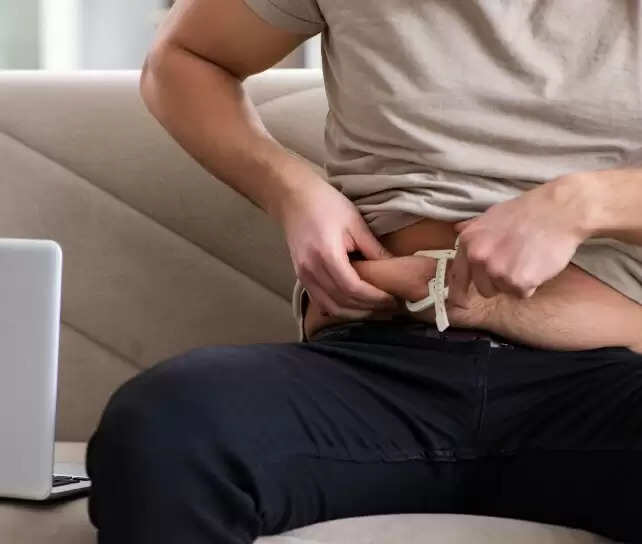What Is Visceral Fat, Why Is It Problematic And How To Get Rid Of It
In this article, let’s learn in detail about this stubborn, hidden visceral fat from a leading dermatologist, Dr. Nivedita Dadu.

You may be lean but still, have fat like that of an obese person. Confused! But this is totally possible. This type of fat is also known as Visceral fat. It lies deep within your abdominal walls and surrounds your organs. While some level of visceral fat is healthy as it protects your organs if it increases, it can put your health at risk.
We’ll also know from her what health problems this fat can lead to and how we can get rid of it.
According to Dr. Dadu, there are two types of fats in our body – Subcutaneous fat and Visceral fat.
Subcutaneous fat is found directly under the skin and we can get rid of it by doing a lot of exercises and following a proper diet. On the other hand, Visceral fat or intra-abdominal fat is wrapped around the organs and is very stubborn.
The ‘Hidden Fat’ – Visceral Fat
Visceral fat is also known as ‘Hidden fat’ as it is stored deep inside the belly. This one’s difficult to get rid of. People suffering from excess intra-abdominal fat can have several health problems even if they are in shape. These include:
- Blood Pressure
- High Cholesterol
- Heart Problems
- Raised Insulin Levels
- Insulin Resistance
- Diabetes
- PCOD (in females)
It is therefore necessary to remove visceral fat from our body and it can’t be done just by exercising and following a proper diet.
Using Technology to Target Visceral Fat
Nowadays, dermatologists use the latest technology to target intra-abdominal fat. It is the easiest way to remove this fat without any sweat or pain.
While talking about the device, Dr. Dadu says that it produces electromagnetic waves which help in muscle contraction, and thus when it is placed over the abdomen, it serves a number of functions. These include:
- Toning of muscles
- Enhancing metabolism
- Increasing blood supply
- Increasing lymphatic drainage
- Strengthening of muscles
When the above activities take place in our abdominal area Lipolysis starts (in other words, the fat starts burning). This further leads to the normalisation of insulin levels and when this happens your health automatically starts improving.
Tackling Visceral Fat in Men with Technology
In men, age and genetics play an important role in developing Visceral fat. Moreover, drinking alcohol can also lead to more belly fat in men. Using the latest fat-burning technology, this intra-abdominal fat can be easily targeted which will help in normalising their insulin levels, improving cholesterol and reducing the chance of diabetes and heart diseases.
Tackling Visceral Fat in Women with Technology
In Women, it has been seen that even if they are not obese, they still may suffer from lean PCOS which is quite common. Such women have been found to have less subcutaneous fat but the visceral fat which is present around the organs is the same as that of obese women. Using this fat-burning technology, the visceral fat in them can be targeted and can help in toning and strengthening their muscles along with bringing insulin levels to normal. With improvement in insulin levels, all hormonal disbalances will also start improving and reproductive organs will become healthy.
While talking about the usage of technology, Dr. Dadu says one has to take two to three sessions in a week to get rid of visceral fat and each session will be half an hour. She further adds that muscle contractions that will take place with the help of this technology in half an hour will be equivalent to 20,000 crunches. Moreover, this technology can be brought to use for other body parts as well like thighs, buttocks, and arms.
Disclaimer: The above content is for informational purposes only and should not be used as a substitute for the advice of a qualified physician or doctor. The Company does not vouch for or endorse any of the above content, and disclaims any and all warranties, express or implied, relating to the same.
.png)